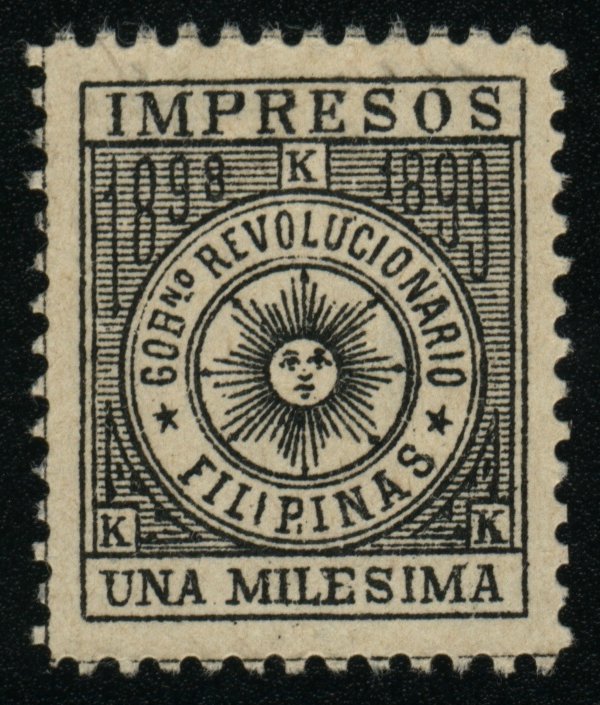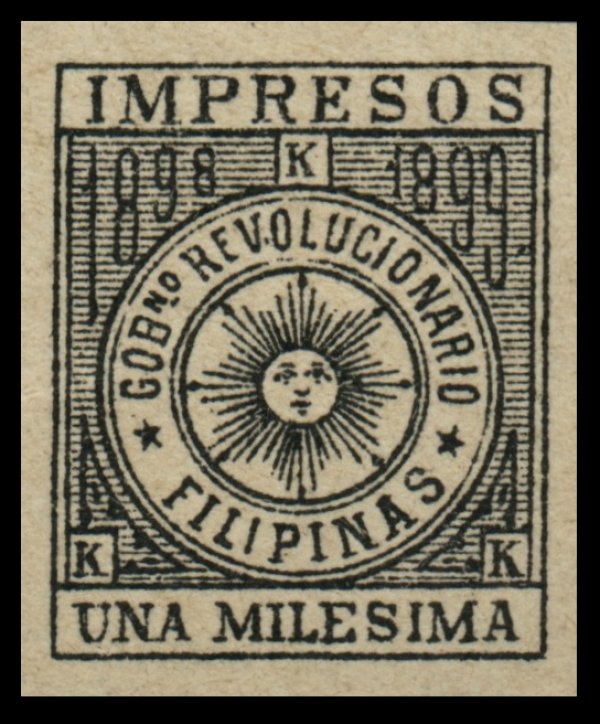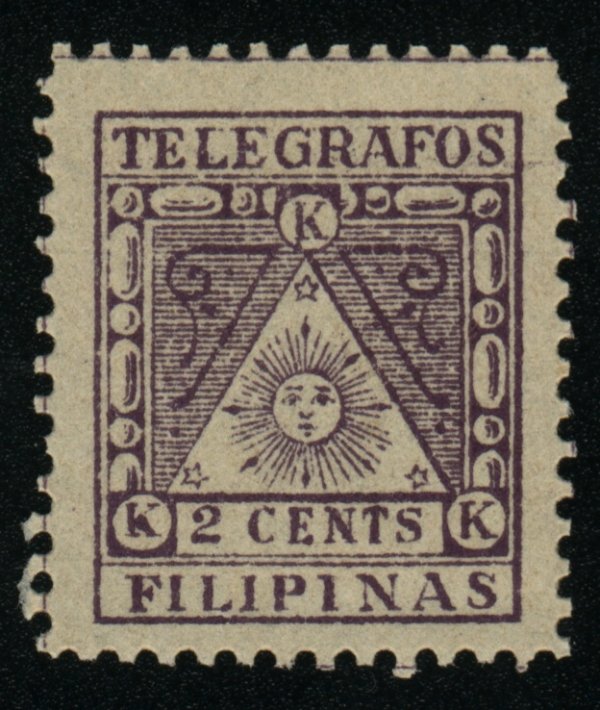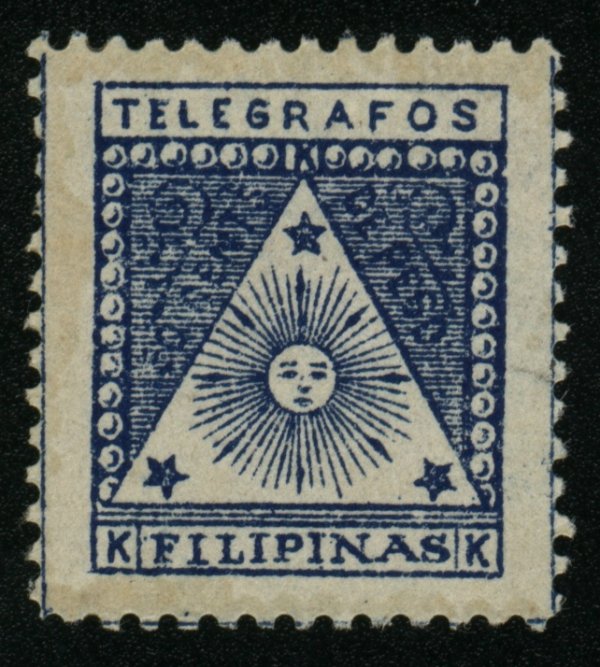|
The Aguinaldo issues are often referred to as the "Katipunan" or "First Republic" issues. These
issues were the postal and fiscal stamps issued by the Republicans under the
leadership of General Emilio Aguinaldo.
The Filipino Republic was instituted by Aguinaldo on June
23, 1898, at this time assuming the office of President. The Filipinos,
under Aguinaldo's leadership, had organised a
Government which remained in force during the time of the overthrow of the
Spanish Power in the Philippines; the Fall of Manila'
and after hostilities had broken out between the Filipinos and the Americans
on February 4, 1899. For at least ten
months, the Filipinos were under control of neither the
Spanish or American Authorities, but acknowledged the leadership and
presidency of Aguinaldo. His Revolutionary
Government had become recognised throughout the islands, except for Manila and some sea-ports
still held by the Spaniards, such as Zamboanga. In
those ten months, civil governments were established, a native army was
organised, telegraph lines which had been destroyed during the insurrection
were repaired, a postal system had begun, and a stamp tax enforced. In fact,
all the basic steps had been taken towards the goal of a free Nation. Aguinaldo was taken prisoner by United States troops on March 23, 1901.
The devices composing
the National Arms, adopted by the Filipino Revolutionary Government, are
emblems of the Katipunan origin. The letters
"KKK", which appear on the stamps, are the initials of this society
whose complete name is "Kataas-taasang, Kagalang-galang Katipunan ng mga Anak
ng Bayan",
translated to mean "Soveriegn Worshipful
Association of the Sons of the Country".
Whilst the
Revolutionary Government did not, at any time, actually occupy Manila, they were recognised
as being in charge of certain areas, and their postage stamps were also
recognised as having postal validity in the areas which they did control.
THE
STAMPS
An effort was made at Malolos, in September 1898, to issue the needed stamps
for all governmental purposes, but the facilities were found inadequate. On November 2, 1898, a decree was issued formalising the
Revolutionary Postal and Telegraph Service. A contract was made with a firm
of lithographers in Manila by whom all the
stamps actually issued and used were made. As correspondence with the
insurgents rendered one liable to suspicion in the eyes of the American
Authorities at all times, especially after the outbreak in February 1899, it
is probable that hasty preparation and the necessity for secrecy and taking
advantage of special opportunities for sending out supplies will go far to
account for the part perforate, imperforate, and sometimes ungummed sheets sent out for use before being completed;
some of which were used while others were found among supplies later captured
by the Americans.
There can be no
possible doubt that all the stamp issues were in actual use for the purposes
intended. Used copies are quite scarce in all cases, and in some are quite
rare. The reason for this is that practically all correspondence bearing
these issues were destroyed by the recipients, lest it being found in their
possession would be used as proof of complicity in the Insurrection, and
would subject them to punishment.
All the stamps in this
series were printed in sheets of a single pane and without any marginal
legend. The stamps were all lithographed by the Lithographia
del Gomes in Santa Cruz, Manila. All stamps, with the
exception of the imperforate varieties, are perforated 11½ and along the colored lines separating the stamps. All the stamps,
except the third type of "CORREOS" stamp were issued in 1898; however,
exact dates of issue and quantities are not known.
The regular postage
and telegraph stamps were in use on Luzon as early as November 10, 1898. Owing to the fact
that stamps for the different purposes were not always available together
with a lack of proper instructions, any of the adhesives were permitted to be
used in the place of the other. Hence telegraph and revenue stamps were
accepted for postage and postage stamps for revenue or telegraph charges.
POSTAL
- CORREOS
Designed by Marcelino Gomez and printed by his company, Lithographica de Gomez in Santa Cruz, Manila. The value tablet
consists of fine horizontal lines and the stamps exist in shades of carmine
and vermilion. The stamps were issued in sheets of 50, (five rows of ten
stamps each), with a total of 1,500 printed. Stamps are known to exist with
double impression. (Scott #Y1)
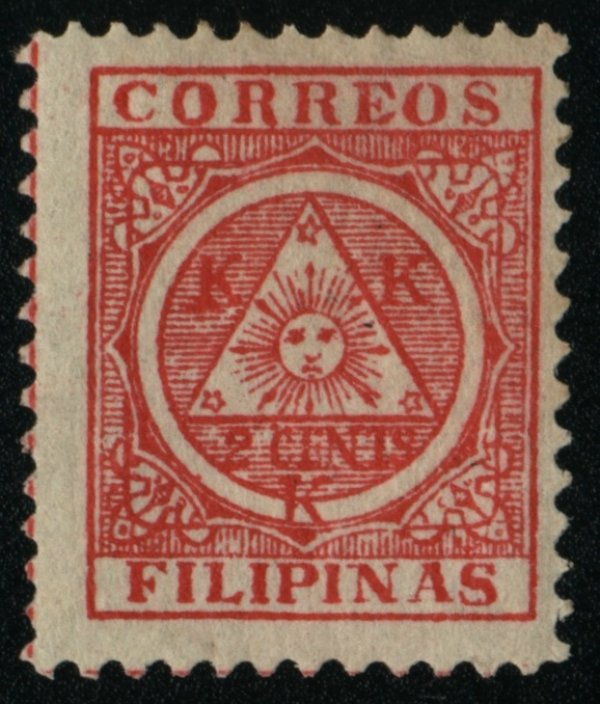
POSTAL
- CORREOS
A reprinted version of
the above stamp, also designed by Marcelino Gomez and printed by the Lithographica
de Gomez in Santa Cruz, Manila. This stamp resembles
the previous issue, except that the value appears on a clear white background
below the triangle, with the fine horizontal lines having been removed. It
may further be distinguished by the upper label, with the letter
"CORREOS" being slightly larger and wider spaced, causing the
"S" to be much closer to the end of the label. Printed in sheets of
192 stamp, (16 rows of 12 stamps each), and exist in a range of shades from
light vermilion to dark red. A total of 50,000 stamps were printed. Stamps
are known to exist with double impression as well as imperforate between
(both vertcially and horizontally). (Scott
#Y2)
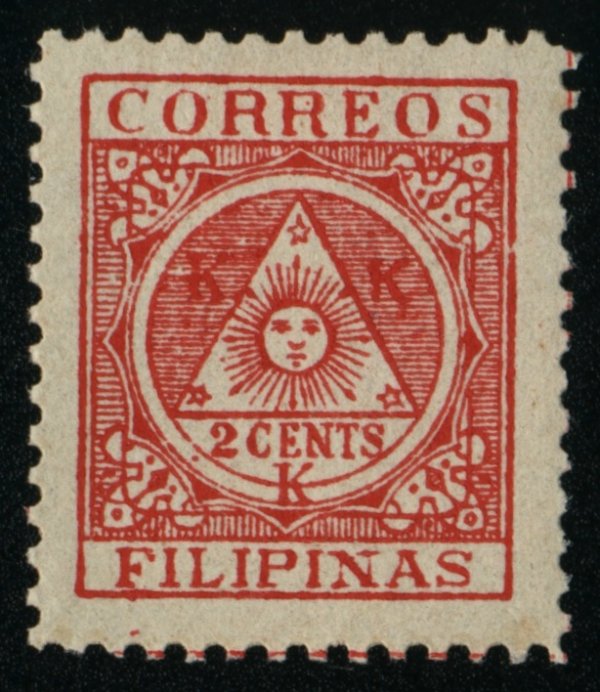
POSTAL
OR TELEGRAPHIC - CORREOS Y TELEGRAPHOS
Designed by Marcelino Gomez and printed by his company, Lithographica de Gomez in Santa Cruz, Manila. Issued in sheets of
50, (five rows of ten stamps each), with a total of 10,000 stamp
printed in shades of vermilion. (Scott #Y3)
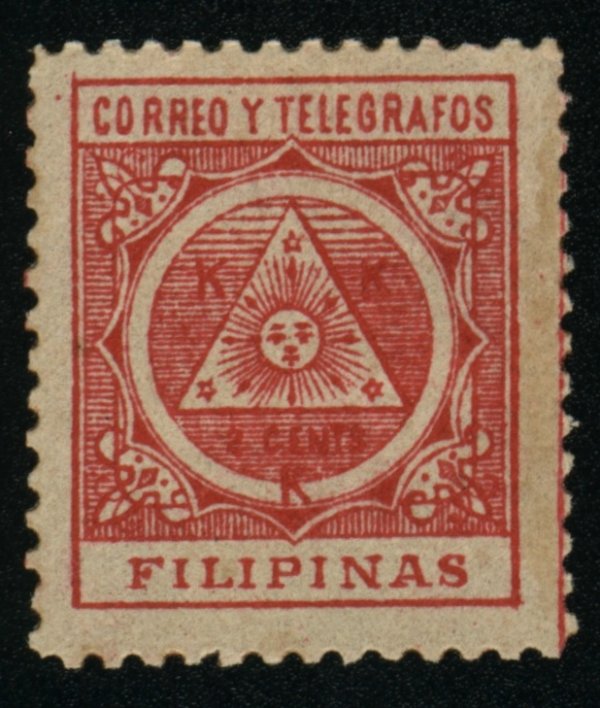
REGISTRATION
STAMP - CERTIFICADO
Printed in sheets of
144 stamps, (16 rows of 9 stamps each), and exist in shades of light green. A
total of 7,200 stamps were printed. It is believed that five sheets (720
copies) exist imperforate. (Scott #YF1)
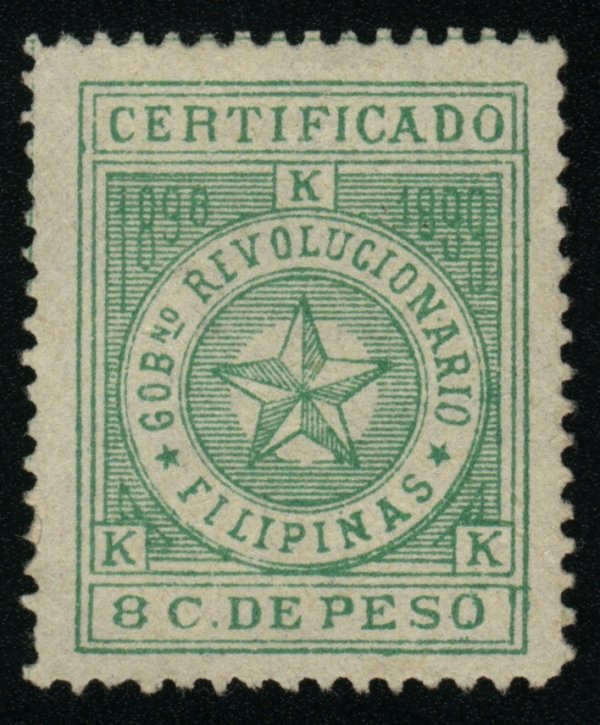
NEWSPAPER
STAMP - IMPRESOS
Printed in sheets of
220 stamps (11 rows of 20 stamps each) and exists both perforated and
imperforated. As most of the used copies seen are of the imperforate variety,
it is believed that this was the earlier issue, and was not perforated
through haste in providing the supply needed. The later issue was perforated,
but probably seldom used, as cancelled copies are quite scarce. It is probable
that very few of either issue were really used as intended, as newspapers
outside Manila were not common, and
the stamps could not be used from Manila, especially after February 4, 1899. There is a re-print of this issue which can
be distinguished from the original by having a large final "A" in
"MILESIMA". A combined total of 50,000 stamps were printed for both
the perforated and imperforated stamps and issued in shades of black and
grey-black. (Scott #YP1 and YP1a)
TELEGRAPH
STAMP - TELEGRAPHOS
Both stamps were
printed in sheets of 192 stamps, (16 rows of 12 stamps each). A total of
19,000 stamps were printed for each value. The 2c value exists in shades of
violet and the 50c in shades of blue.
RECEIPT
STAMP - RECIBOS
Printed in sheets of
153 stamps, (9 rows of 17 stamps each), and exist in shades of red-brown. No
records are available to indicate the actual number of stamps printed.
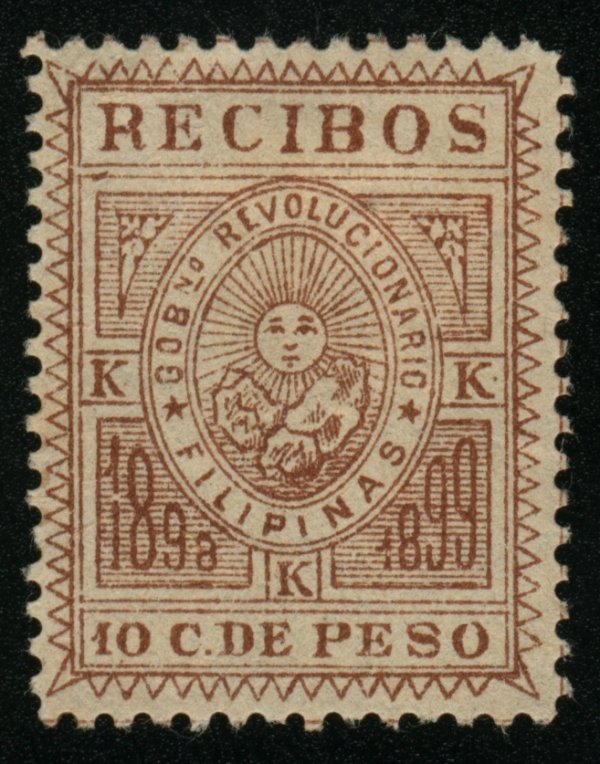
|
![]()
![]()
![]()
